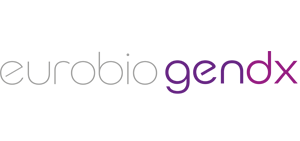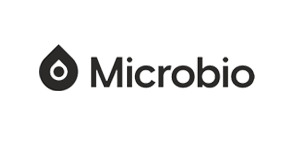Our Location
Sector 14, Dwarka, New Delhi

| Case Review The family clinical report arrives at the laboratory. | First Amplification When the sample arrives at the laboratory, the first amplification begins. In this step, whole genome is amplified. |
| Panel Design The panel is designed specifically for the mutation to study. | Second Amplification A second amplification is performed. This time, just a specific region is amplified. |
| Informative Study Blood from both parents and other family members comes at the laboratory and DNA is extracted. Informative study is carried out to know which allele is inherited from each parent. | Sequencing Library is sequenced, then the results are analyzed with specific software in which each embryo can be diagnosed as affected, carrier or unaffected. This is possible because inherited alleles are known by the previous informative study. |
| Embryo Biopsy Then, the embryos are biopsied on day 3 or 5 by an experienced embryologist. |

| ABCB11 > Choleastasis, progressive familial intrahepatic | COL2A1 > Spondyloepiphyseal dysplasia |
| ACYL-COA DEHYDROGENASE > ACADM deficiency | CYP21A2 > Adrenal hyperplasia, congenital |
| ABCD1 > X-linked adrenoleukodystrophy | D4Z4 > FSHD |
| ACETILCOA > ACADM deficiency | DMD > Duchenne muscular dystrophy |
| AIMP > Trastorno progresivo del neurodesarrollo | DMPK > Steinhert (DM1) |
| AIMP 2 > Epilepsy | DYNC2H1 > Jeune syndrome |
| AR > Kennedy Syndrome. Balances translocation Chr 2-X / Chr 22-17 | ECHS1 > Mitochondrial syndrome |
| ALS2 > Amyotrophic lateral sclerosis | EDA > Hypohidrotic ectodermal dysplasia | ANTRX2 > Infantile systemic hyalinosis | EHS1 > Jeune syndrome |
| ATL > Spastic Paraplegia AD type 3 | EVC-EVC2 > Cerebral Vascular Disease |
| ATXN1 > Spinocerebellar ataxia type 1 | EXT1 > Exostoses, type I |
| ATXN2 > Spinocerebellar ataxia type 2 | EXT2 > Exostoses, type II |
| BBS4 > Bardet-Biedl syndrome 4 | F8 > Hemophilia A |
| BBS10 > Bardet-Biedl syndrome | FBN1 > Marfan syndrome |
| BRCA1 > Breast/ovarian cancer | FGFR3 > Achondroplasia |
| BSCL2 > Spastic paraplegia | FMR-1 > Fragile X syndrome |
| CENPJ > Microcephaly | FUS > Amyotrophic lateral sclerosis (ALS) |
| CEP290 > Meckel Gruber syndrome | GALC > Krabbe disease |
| CFTR > Cystic fibrosis | GALNS > Mucopolysaccharidosis |
| CHM > Choroideremia | GJA1 > Oculodentodigital dysplasia |
| CLCN1 > Myotonia congenita (Thomsen’s disease) | HBA1-HBA2 > Alpha Thalassemia |
| CSF1R > Adult-onset leukoencephalopathy with axonal spheroids and pigmented glia (ALSP) | HBB > Thalassemia-beta |
| COL11A1 > Stickler syndrome, type II | HEXA > Tay-Sachs disease |
| COL1A1 > Osteogénesis imperfecta | HLA > Histocompatibility |
| HNF1B > Renal cysts and diabetes syndrome | HTT > Huntington disease |
| IL2RG > Combined immunodeficiency, X-linked | POMK > Muscular dystrophy-dystroglycanopathy |
| L1CAM > Hydrocephalus | PRPH2 > Stargar’s disease |
| L1CAM_ABCD1 > */ Adenoleukodystrophy | RB1> Retinoblastoma |
| LAMA3 > Epidermolysis bullosa | RET > Multiple endocrine neoplasia II |
| LAMB3 > Epidermolysis bullosa | RHO > Retinitis pigmentosa |
| LMNA > Cardiomyopathy dilated | RYR1 > Central core disease |
| LYNCH > Lynch syndrome | SCN4A > Paramiotonia (Thomsen disease) |
| MEN1 > Multiple endocrine neoplasia | SMN1 3′ > Spinal muscular atrophy |
| MPZ > Charcot-Marie-Tooth TYPE 1B | SMN1 5′ > Spinal muscular atrophy |
| MKS1 > Meckel Gruber syndrome | SPAST > Spastic paraplegia type 4 |
| MSH2 > Lynch syndrome | SPG3A > Spastic paraplegia AD type 3 |
| MYBPC3 > Hypertrophic cardiomyopathy | TBX5 > Holt-Oram syndrome |
| MYH7 > Miopathy | TCOF1 > Treacher Collins syndrome 1 |
| NF1 > Neurofibromatosis Type 1 | TGFBR1 > Loeys-Dietz syndrome |
| NOTCH3 > CADASIL | TNNT2 > Dilated cardiomyopahty |
| OTC > Ornithine transcarbamylase deficiency | TNXB > Ehlers-Danlos syndrome, classic-like |
| PAX6 > Peters anomaly | TP53 > Li-Fraumeni syndrome |
| PLP1 > Pelizaeus-Merzbacher | TSC1 > Tuberous sclerosis-1 |
| PKD1 > Autosomal dominant Polycystic kidney disease 1 | TWIST1 > Saethre-Chotzen syndrome |
| PKD2 > Autosomal dominant Polycystic kidney disease 2 | UNC13D > Hemophagocytic lymphohistiocytosis, familial, 3 |
| PKHD1 > Autosomal recessive Polycystic kidney and Hepatic disease | VHL > Von Hippel-Lindau syndrome |
| PMM22 > Congenital disorder of glycosylation, type la | VMT1B=MPZ > Charcot-Marie-Tooth disease, type 1B |
| PMP22 > Charcot-Marie-Tooth disease, type 1A and type 1E | VPS13B > Cohen syndrome |
For any queries or detailed requirements, get in touch with our team of experts at Shiva Scientific.








Shiva Scientific
Copyright © 2024. All rights reserved.